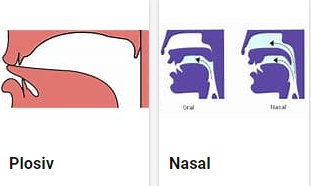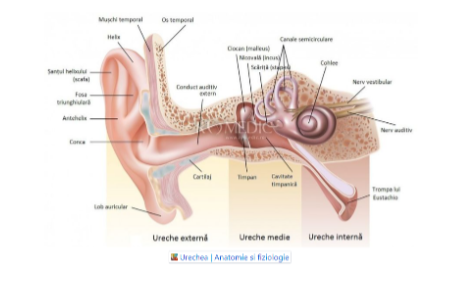Speech functions
In the history of human evolution, the ability to speak is at one of the highest stages of evolution. All the organs that allow the reception and production of speech actually have other tasks. Their transformation into a means of communication required extremely complex adaptations and the evolution of cognition.
Content
Language
Language is hierarchically ordered: smaller units can be arranged in various combinations to form an almost unlimited number of larger units. On the one hand, we are talking about sounds that are grouped into syllables and whole phonological phrases. On the other hand, words that are connected by grammatical signs to form syntactic units and finally sentences.
The linguistic ability to act is called pragmatics. It is the result of socialization processes, the first of which takes place at home, up to school age. This is followed by the process of socialization at school. The ability to act linguistically does not mean only communicative competence. It is also a prerequisite for impersonation, improvisation, person profiling in free speech, role playing and more.
Breath
A current of air is needed to form speech sounds. For most languages, as for all European languages, it is the exhaled air that comes from the lungs.
The lungs have an area of about fifty square meters. This surface is occupied by millions of small alveoli. An adult human lung can contain between four and a half and six liters of air, which is exchanged in about twenty thousand breathing processes. It is estimated that ten thousand liters of air move through the lungs every day. When we sleep, we inhale and exhale about five liters of air per minute, when we walk we inhale and exhale 14 liters, and when we run we inhale and exhale 170 liters. When we cough, the air flow reaches a speed of three hundred kilometers per hour and even more. When we sneeze, it is "only" 170 km/h.
To expand the chest and lungs, which are in a vacuum due to the lung pleura, so that air can enter, a complex interaction between the muscles of the abdomen, the intercostal muscles and - to support breathing - the muscles of the shoulder girdle is required. The process of breathing is especially easy to observe during abdominal breathing. To feel even better how the muscles work, you can put your hand on the abdomen, under the rib cage.
During resting breathing, the inhalation and exhalation phases are approximately the same duration. However, in the case of vocal breathing, the exhalation process takes four times longer than the inhalation.
Speech initiation phase
The airflow created on exhalation passes through the vocal folds in the larynx and is divided into small "slices" by different opening and closing frequencies. Air flowing through the glottis sets the vocal cords in motion, producing sound waves that can be perceived aurally as sounds.
The volume and dosage of the air flow are also responsible for being able to place the correct emphasis when speaking. The speaker emphasizes the information in such a way as to ensure that his intentions are understood. This refers to accent, melodic arc (contour) and also arbitrary accent. The flow of the breath thus regulates the volume, tone and also the speed of speech and thus the intentions of the speaker.
The individual sounds of human voices, the deep bass of a man's, a woman's or a child's voice, depend on the length and nature of the vocal cords. In men, for example, the base frequency is about 100 Hz (heart). Women's voices have a base frequency of about 200 Hz, and because children's vocal cords are still so short, they speak with a base frequency of 300 Hz and higher. Expiratory air pressure is higher than in adults.
When boys' vocal cords get longer during puberty and the brain hasn't yet readjusted to the pressure, the voice can sometimes "crack". So the voice change isn't dangerous, it's just that the interaction between the longer vocal cords and the exhalation needs to be readjusted.
Phonation and articulation
The next phase of sound production concerns the degree of opening of the vocal folds and vocal cords and the consequences of this. On exhalation, the vocal folds are wide open. In this position, air can enter the front of the oral cavity with a lot of pressure. The barriers formed in the oral cavity by tight closures of the lips, the tongue on the dental arch, the back of the tongue on the palate, are really open to the air flow. The sounds T, P, K are produced, which in technical language are also called plosives. If the airflow is already slowed down when it enters the pharynx, it causes the vocal folds to vibrate. The same occlusions in the oral cavity produce the vowel sounds B, D or G.
The sounds M, N, and NG are also produced by the same barriers as plosives. However, the airflow is diverted through the nose and nasal congestion occurs.
The small openings in the barriers, through which the air current can pass, form fricatives such as F, S, SCH, CH, H.
R and L are the so-called sides. They can form in several places in the mouth.

There are no barriers in the formation of vowels. Air flow is uninhibited. The position of the tongue, the opening of the mouth, the muscle tension and the exact place of articulation in the oral cavity are decisive for the formation of individual vowels.
Hearing
In linguistics, phonetics deals with the study of speech and language signal processing, because speech without hearing does not work.
Speech signals reach our ears as sound waves, sinusoidal oscillations through the air, and set the eardrum in motion. These vibrations are transmitted first to the ossicles of the ear and then to the cochlea. The cochlea can be viewed as a funnel that has been rolled over. The inside of the cochlea is provided with very fine hairs, on which there are sensors, which are moved by sound waves. If there is a lot of noise, it can happen that sensitive hairs are bent so much that they no longer straighten. This leads to hearing loss.
Low tones are detected in the wider entrance area of the cochlea, and high tones in the narrower, inner part. In this process, mechanical impulses are converted into electronic impulses and transmitted to the brain via nerve pathways. Perceptions are processed through neural processes. The brain not only decodes speech signals, but also filters out more important background information. For example, a person can focus on a single conversation partner and track a particular communication, even if several conversations are happening at the same time in close proximity.

What does this mean for my teaching practice?
Since breath control and airflow metering are responsible not only for sound production but also for speech functionality, it must be practiced especially for presentation, imitation, and performance situations. Active breathing training also helps shy children who speak very slowly.
Reflection question
What is the importance of breathing in the development of functionally successful communication?
Quiz
1) The phase of sound production in which the degree of opening of the vocal folds and vocal cords plays a role, is called
A) initiation
B) articulation
C) phonation
2) The conversion of sound waves into neuronal impulses occurs
A) in the cochlea
B) in the eardrum
C) through the ossicles